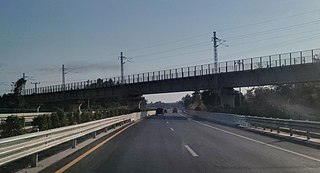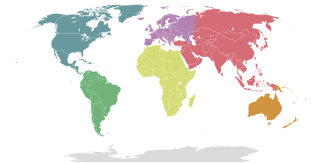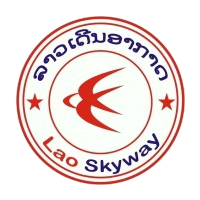 | |||||||
| |||||||
| Founded | 1962 | ||||||
|---|---|---|---|---|---|---|---|
| Ceased operations | 1976 | ||||||
| Destinations | See destinations | ||||||
| Parent company | Royal Lao Government | ||||||
| Headquarters | Vientiane, Laos | ||||||



Royal Air Lao was the national air carrier of the Kingdom of Laos that operated from 1962 to 1974.
 | |||||||
| |||||||
| Founded | 1962 | ||||||
|---|---|---|---|---|---|---|---|
| Ceased operations | 1976 | ||||||
| Destinations | See destinations | ||||||
| Parent company | Royal Lao Government | ||||||
| Headquarters | Vientiane, Laos | ||||||



Royal Air Lao was the national air carrier of the Kingdom of Laos that operated from 1962 to 1974.
The company was founded in 1962. [1] In September 1976 the Civil Aviation Company was formed from the merger of Royal Air Lao and Lao Air Lines. [2] Today the successor is Lao Airlines.
Aircraft that were in service were
Royal Air Lao codeshared with the following airlines:

Evidence of modern human presence in the northern and central highlands of Indochina, which constitute the territories of the modern Laotian nation-state, dates back to the Lower Paleolithic. These earliest human migrants are Australo-Melanesians—associated with the Hoabinhian culture—and have populated the highlands and the interior, less accessible regions of Laos and all of Southeast Asia to this day. The subsequent Austroasiatic and Austronesian marine migration waves affected landlocked Laos only marginally, and direct Chinese and Indian cultural contact had a greater impact on the country.

This article concerns the systems of transportation in Laos. Laos is a country in Asia, which possesses a number of modern transportation systems, including several highways and a number of airports. As a landlocked country, Laos possesses no ports or harbours on the sea, and the difficulty of navigation on the Mekong means that this is also not a significant transport route.

The Laotian Civil War was waged between the Communist Pathet Lao and the Royal Lao Government from 23 May 1959 to 2 December 1975. The Kingdom of Laos was a covert theater during the Vietnam War with both sides receiving heavy external support in a proxy war between the global Cold War superpowers. The fighting also involved the North Vietnamese, South Vietnamese, American and Thai armies, both directly and through irregular proxies. The war is known as the Secret War among the American CIA Special Activities Center, and Hmong and Mien veterans of the conflict.

Lao Airlines State Enterprise is the flag carrier of Laos, headquartered in Vientiane. It operates domestic and international services to countries such as Cambodia, China, Japan, South Korea, Thailand and Vietnam. Its main operating base is Wattay International Airport in Vientiane. It is subordinate to the Ministry of Public Works and Transport.

Siem Reap Airways International was a Cambodian regional airline based in Phnom Penh, Cambodia. Wholly owned by Bangkok Airways of Thailand, its primary hub was Phnom Penh International Airport, with secondary hubs at Suvarnabhumi Airport and Siem Reap International Airport. It ceased operations in 1 December 2008.

Luang Prabang International Airport, is one of the few international airports in Laos. The airport is located about 4 kilometres (2.5 mi) from the centre of Luang Prabang. The second busiest airport in the country, it is a regional hub for international flights to Bangkok, Chiang Mai and Siem Reap and other cities such as Vientiane and Phongsali. The airport underwent significant expansion work in 2012–13, when it was upgraded and expanded, and the runway enlarged.

The French protectorate of Laos was a French protectorate in Southeast Asia of what is today Laos between 1893 and 1953—with a brief interregnum as a Japanese puppet state in 1945—which constituted part of French Indochina. It was established over the Siamese vassal, the Kingdom of Luang Phrabang, following the Franco-Siamese crisis of 1893. It was integrated into French Indochina and in the following years further Siamese vassals, the Principality of Phuan and Kingdom of Champasak, were annexed into it in 1899 and 1904, respectively.

The Catholic Church in Laos is part of the worldwide Catholic Church, under the spiritual leadership of the pope in Rome. The Catholic Church is officially recognized by the government.

Savannakhet Airport is an international airport near Savannakhet, Laos.

Christianity is a minority religion in Laos.
The Baháʼí Faith in Laos begins after a brief mention by ʻAbdu'l-Bahá in 1916 and the first Baháʼí enters Laos in about 1955. The first Baháʼí Local Spiritual Assembly is known to be first elected by 1958 in Vientiane and eventually Laos' own National Spiritual Assembly is first elected in 1967. The current community is approximately eight thousand adherents and four centers: Vientiane, Vientiane Province, Kaysone Phomvihane, Pakxe and smaller populations in other provinces. While well established and able to function as communities in these cities, Baháʼís have a harder time in other provinces and cannot print their own religious materials. The Association of Religion Data Archives estimated almost 14000 Baháʼís in 2005.

Lao Skyway, formerly known as Lao Air, is a private airline with its headquarters at Wattay International Airport in Vientiane, Laos. It operates scheduled and charter services to airports in Laos.

Laos has 422 km (262 mi) of 1,435 mm standard gauge railways, primarily consisting of the Boten–Vientiane railway, which opened in December 2021. It also has a 12 km (7 mi) metre gauge railway with two stations in Vientiane, Khamsavath and Thanaleng, both of which are connected to Thailand's railway system. There are a total of 22 stations in Laos - 20 on the Boten–Vientiane railway, and 2 linking to the State Railway of Thailand.

Vientiane is the capital and largest city of Laos. Comprising the five urban districts of Vientiane Prefecture, the city is located on the banks of the Mekong, right at the border with Thailand. Vientiane was the administrative capital during French rule and, due to economic growth in recent times, is now the economic center of Laos. The city had a population of 840,000 as of the 2023 Census.

Lao Central Airlines Public Company, operating as Lao Central Airlines, was an airline in Laos with its head office in Wattayyaithong Village, Sikhottabong District, Vientiane. The airline was founded in 2010, and ceased operations in 2014.
Project Hotfoot was a secretive military training mission from the United States in support of the Kingdom of Laos. It ran from 22 January 1959 through 19 April 1961. Working in civilian clothing in conjunction with a French military mission, it concentrated on technical training of the Royal Lao Army.
The 1960 Laotian coups brought about a pivotal change of government in the Kingdom of Laos. General Phoumi Nosavan established himself as the strongman running Laos in a bloodless coup on 25 December 1959. He would be himself overthrown on 10 August 1960 by the young paratrooper captain who had backed him in the 1959 coup. When Captain Kong Le impressed the American officials underwriting Laos as a potential communist, they backed Phoumi's return to power in November and December 1960. In turn, the Soviets backed Kong Le as their proxy in this Cold War standoff. After the Battle of Vientiane ended in his defeat, Kong Le withdrew northward to the strategic Plain of Jars on 16 December 1960.
Operation Xieng Dong was a successful defensive strike by the Royal Lao Army (RLA) against an invasion by the People's Army of Vietnam (PAVN). In early February 1971, PAVN forces swept RLA defenders from a line of hilltop positions guarding the royal capital of Luang Prabang. The city's perceived invulnerability to attack was shattered. King Sisavang Vatthana refused to leave his capital. Other Military Regions of Laos hastily forwarded to Luang Prabang's Military Region 1 any troops that could be spared from the rest of the Laotian Civil War. On 7 April, the resulting patchwork force of RLA battalions, Forces Armee Neutraliste half regiment, and Central Intelligence Agency-backed Special Guerrilla Units managed a three-pronged offensive supported by tactical aviation that surrounded and defeated the invading PAVN 335th Independent Regiment, which had gotten within eight kilometers of Luang Prabang. By 5 June 1971, the 335th was in full retreat.
![]() Media related to Royal Air Lao at Wikimedia Commons
Media related to Royal Air Lao at Wikimedia Commons